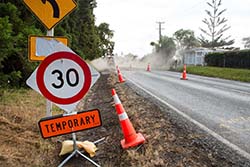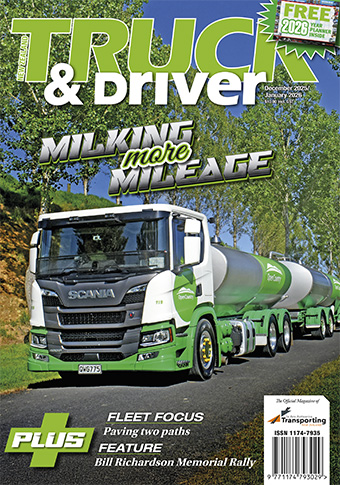
Value Of Health And Safety Reforms Obscured By Road Cone Hotline
Posted: 03-Apr-2025 |
Civil Contractors New Zealand Chief Executive Alan Pollard said moves to right-size New Zealand’s health and safety system were well-intentioned following a ‘quality’ consultation process, and welcomed many changes proposed in the government’s move to cut red tape.
However, the announcement of a new ‘road cone hotline’ was disappointing, unworkable, and likely to create confrontation between the public and workers on the road – who were already the target of significant public aggression and abuse.
“We know workers are already the target of public abuse. We also know from previous experience that these types of initiatives, which pit the public against road workers, cause increases in public aggression and increase hostility.
“Public abuse is the single biggest risk to road workers across several regions of New Zealand, and I am not confident a road cone hotline will do anything more than increase aggression and risk to road workers, at public cost.”
Mr Pollard said it was ‘hugely important’ to protect the people working in high-risk locations, such as 100km/hr road corridors or trenches around utilities such as water pipes, energy cables and high-pressure gas lines – not to mention road users around these sites.
Traffic management requirements had long been driven by prescriptive rules set by construction industry clients, and the move to a risk-based approach would strike a more appropriate balance between safety and efficiency, he said.
“Traffic management requirements have become more prescriptive every decade, and the risk-based approach is a step in the right direction to make sure any controls put in place – including cones – are applied correctly for the site they are set up to support.
“However, managing traffic around road work sites is complex work. It’s not just road cones, it’s planning, road closures, site layouts, site setup and dialog between clients, designers and contractors. There are often dire consequences if it goes wrong.”
Mr Pollard said moves toward risk-based temporary traffic management would lead to better safety outcomes and more appropriate on-site controls.
Road cones were just one tool to manage safety. Full or partial road closures could provide a safe and efficient fix in some situations, such as overnight maintenance and the industry was exploring ways to better manage risk on and around work sites.
More broadly, the balance of the reforms outlined by the government were welcome, particularly the proposed adjustments to the primary purpose of the Health and Safety at Work Act 2015 to focus more on critical risk.
“We have seen genuine, personal contact from the Minister throughout the consultation process, which has been refreshing and engaging for our members.
“Refocusing the system toward managing critical risk and away from tick-box compliance for the sake of it are positive things. Any time getting those things right will be well spent.”



 + EQUIPMENT GUIDE - FREE
+ EQUIPMENT GUIDE - FREE
